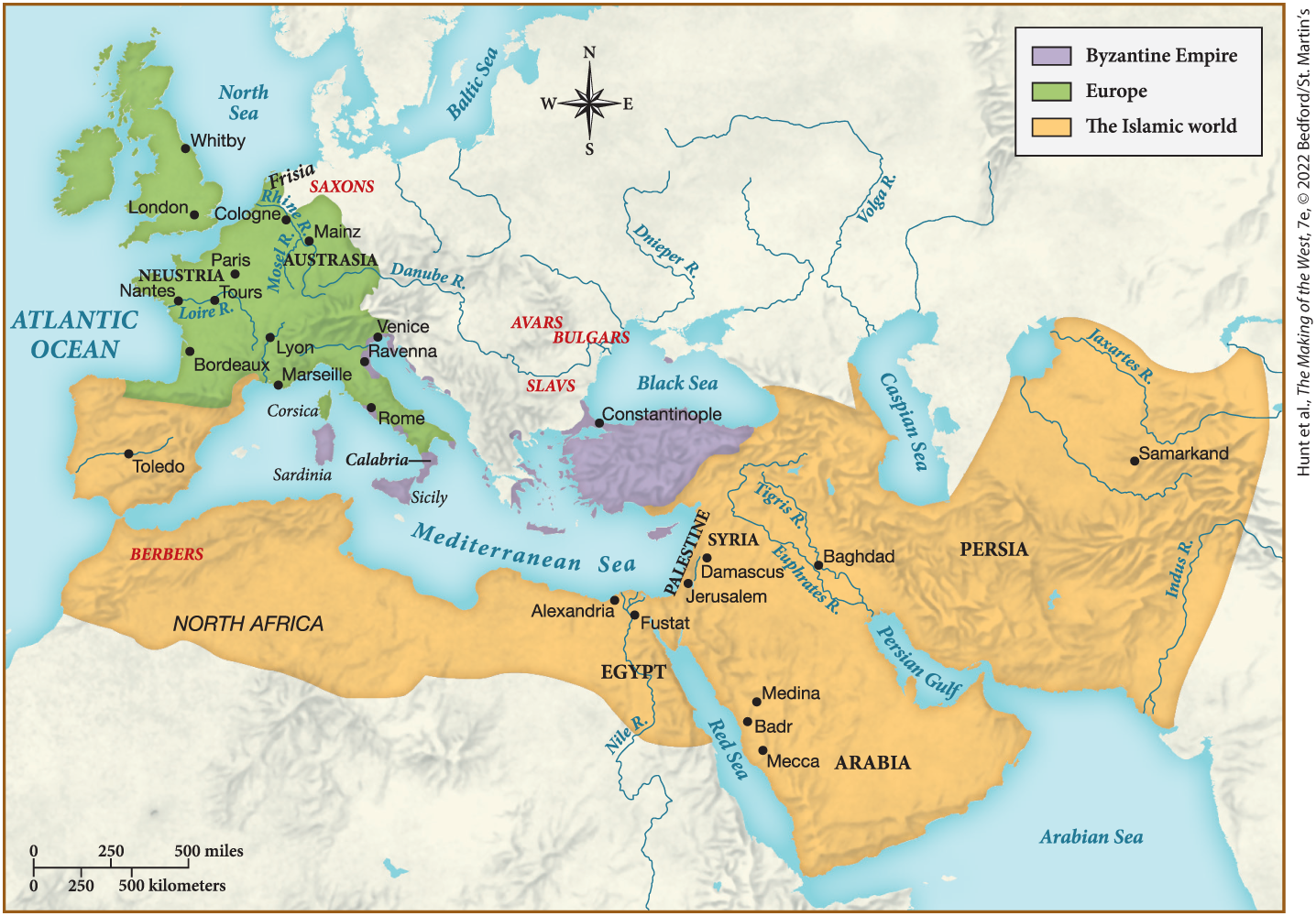Foundations of Western Civilizations (Chapters 8-13)
1/29
There's no tags or description
Looks like no tags are added yet.
Name | Mastery | Learn | Test | Matching | Spaced |
|---|
No study sessions yet.
30 Terms

Which of the following statements about Islam’s expansion is justified by this map?
From the time of Muhammad through the Umayyad dynasty, Islam expanded.
Roman Christianity's organization was based on bishops' and archbishops' control of territorial units called
dioceses.
Why did the Byzantine Empire, an empire based in the east, see itself as the continuation of the old Roman Empire?
It maintained Roman laws and systems of taxation.
Which pope of the late sixth and early seventh centuries is credited with having greatly expanded the political and religious powers of the papacy?
Gregory the Great
What was one major departure from Roman life in Merovingian lands during the sixth and seventh centuries?
Cities and trade had decayed drastically.
Why did Mecca have religious importance even before the rise of Islam?
The Ka'ba shrine had been a sacred site of pilgrimage for generations.
In the seventh century, the Byzantine Empire was divided into military units, each of which was commanded by a general called the
strategos.
What does the term ummah refer to?
The community of believers
Why did sentiment grow against the use of icons in the Byzantine Empire in the eighth century?
Icons violated prohibitions on the worship of graven images.
Muhammad perceived Allah as
the same God worshipped by Jews and Christians.
Why did many Christians in the Middle East welcome the new Islamic overlords?
They welcomed the more tolerant Islamic rule after the persecution waged by Byzantine rulers.
A major conflict between Irish and Roman Christianity was how to calculate the date of
Easter.
How was it that many bishops were married even though church councils demanded that the clergy be celibate?
Bishops were usually appointed late in life, after they had raised a family.
Aristocratic Merovingian women
were often allowed to inherit property.
The conflict over Christian orthodoxy that raged in England during the early seventh century was fought between the Roman Catholic church and
the Irish church.
Why did relations between Rome and the Byzantine Empire deteriorate so markedly in the late seventh and early eighth centuries?
Doctrinal issues, including the thorny question of icons, began to divide eastern and western churches.
The monk and historian Bede (673–735), a student of Benedict Biscop, taught
many royal advisers.
Which of the following statements regarding Christian bishops is true?
Bishops performed the secular (nonreligious) role of state administrators in their cities.
Between 630 and 730, the Byzantine Empire
lost much of its territory to invading armies.
Who ordered the destruction of all icons after the eighth-century defeat of the Arabs besieging Constantinople?
Leo III the Isaurian
What was one major departure from Roman life in Merovingian lands during the sixth and seventh centuries?
Cities and trade had decayed drastically.

According to this map, which of the following can be said about Islam by about 750?
The Islamic world dwarfed Europe and the Byzantine Empire in size and influence.
Before their conversion to Christianity the Anglo-Saxons and Irish Celts had relied more on oral than written culture. During the seventh century, the use of the Anglo-Saxon language was
encouraged by Bede (673–735).
What was the Hijra?
Muhammad's journey from Mecca to Medina
Which of the following statements regarding Christian bishops is true?
Bishops performed the secular (nonreligious) role of state administrators in their cities.
The Dome of the Rock, a holy Muslim mosque, is located in
Jerusalem.
Muhammad understood himself to be
the last and final prophet.
The monk and historian Bede (673–735), a student of Benedict Biscop, taught
many royal advisers.